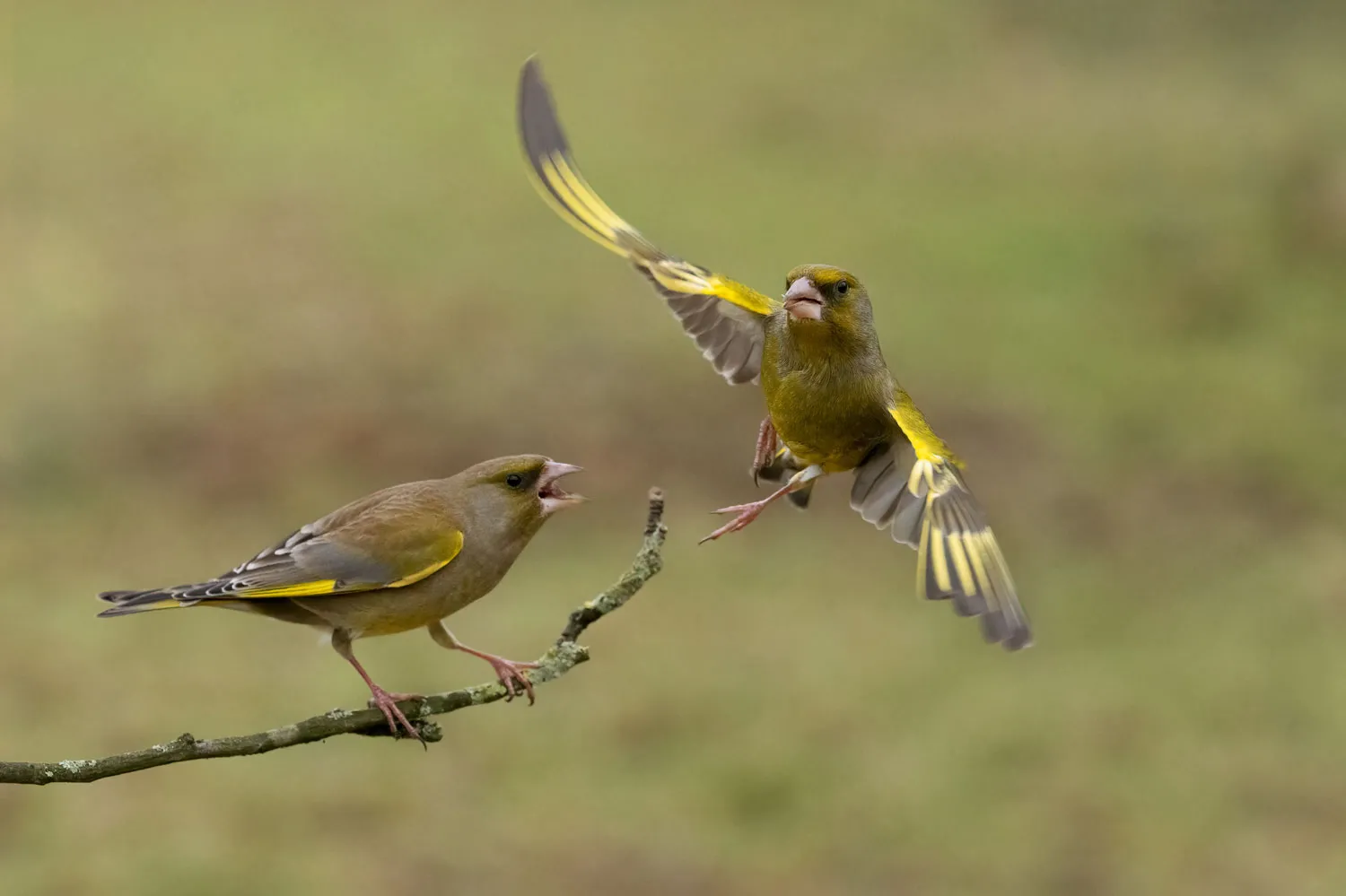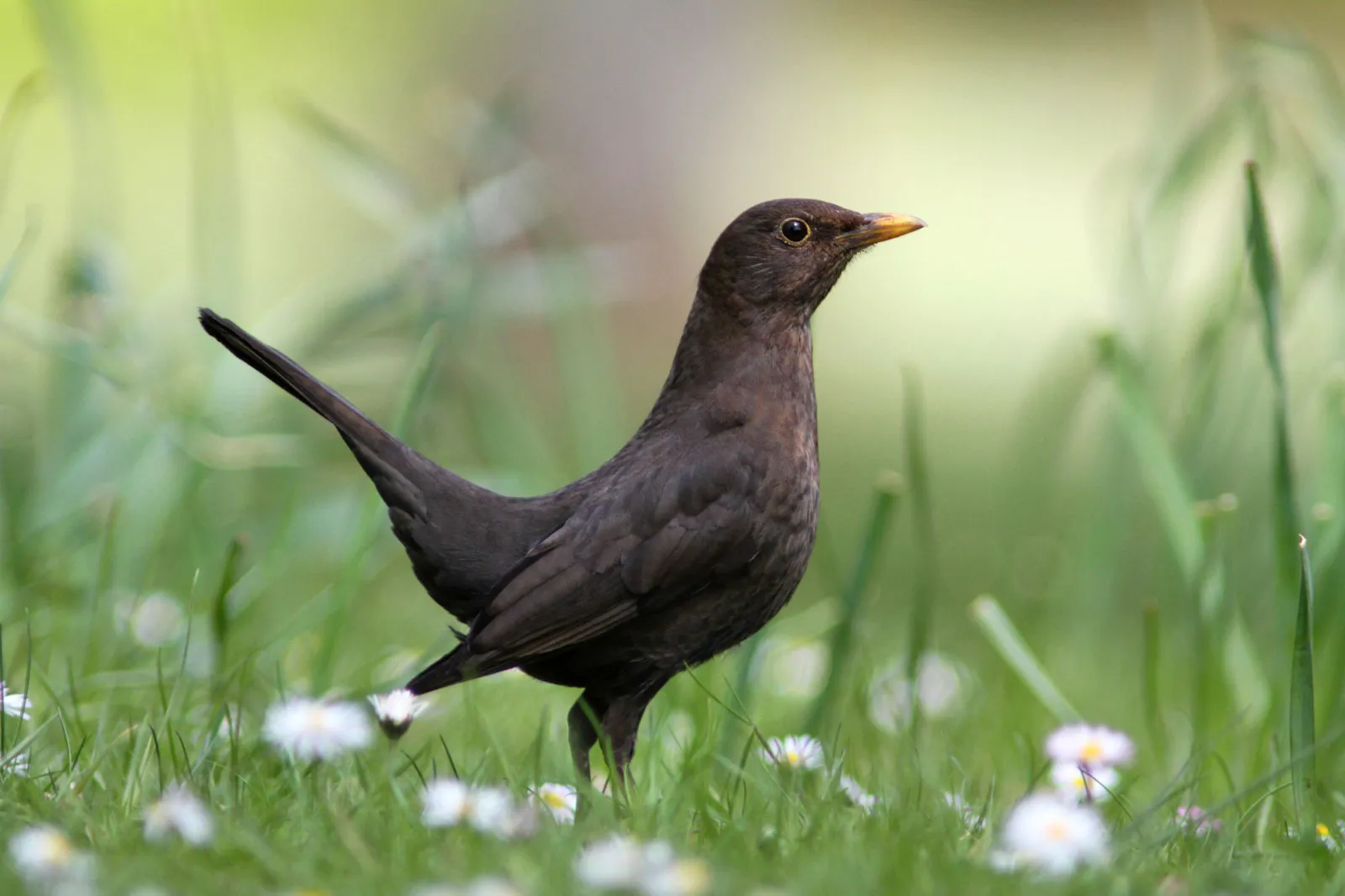Wild birds can be affected by many different types of parasite or disease. In many cases these have relatively little impact on the individual, but in some cases they can cause illness or even death. BTO has continued to play a central role in the response to the emergence of highly pathogenic avian influenza (HPAI) in our waterbird, seabird, and bird of prey populations, to trichomonosis in our garden birds, and to Usutu virus in Blackbirds.
Disease and garden birds
Much of BTO's work in this area assesses the prevalence of disease in birds using gardens. Birds coming to feeders often congregate more closely than they would in the wild, so the risk of disease transmission can be increased. BTO works to understand how to minimise these risks, and to provide advice on the safest way to feed birds.
Through our partnership with RSPB, the Institute of Zoology, and Froglife, on projects such as the Garden Bird Health initiative and Garden Wildlife Health, we have been able to make a significant contribution to our understanding of the diseases affecting birds and some other garden wildlife. This work identified the emergence of finch trichomonosis and documented its impacts on UK Greenfinch and Chaffinch populations, helping to shape the best practice advice now being given to those feeding garden birds.

The work on finch trichomonosis highlighted the role that garden feeding stations may play in disease transmission, adding to our understanding of the potential costs and benefits of feeding garden birds, something explored BTO blog posts by Kate Plummer.
Through Garden Wildlife Health we have also been able to explore the spread of avian pox in our tit species, examine leg lesions in Chaffinches, and study the extent to which garden birds may be a source of salmonella infection in people.
Explore Garden Wildlife Health publications
High pathogenicity avian influenza
In response to the scale and potential impact of avian influenza (bird flu) on our bird populations, we have developed and been delivering an extensive programme of work in response. Our volunteer network acts as one of the early warning signs of further significant outbreaks, and we have been working to both document the impacts of the outbreaks and to inform future responses.
As part of this work, we have carried out vulnerability assessments, identifying the species and populations at greatest risk from the outbreaks. This information is being used to direct conservation responses and the prioritisation of resources. BTO has also been developing tools to inform future decision making, including the development of predictive models that can highlight likely spread in poultry based on wild bird abundance and movements across Europe, something of great importance to the poultry industry.
We recognised the need to bring together the knowledge and data being generated as researchers from across the world responded to HPAI outbreaks in wild birds, launching a call for papers for a special issue of our journal Bird Study, published in 2025. By bringing this information together in one place we will also deliver an opportunity to raise awareness of the work being done as we respond to this disease.
Usutu and Blackbirds
Regional declines in Blackbird population have been linked to the linked to the emergence of Usutu, a mosquito-borne virus that was first detected in the UK in 2020. In August 2020, the virus was involved in the deaths of five Blackbirds and a House Sparrow in Greater London.
Songbirds are the main species affected by the virus and Blackbird appears to be particularly susceptible, to the extent that it is commonly used as a sentinel species for detection of the virus in an area. The emergence of Usutu in the UK is perhaps not unexpected. A changing climate, coupled with the interconnectivity now taken for granted globally, means that diseases once considered restricted to tropical and sub-tropical regions are now emerging elsewhere. Some of these diseases have implications for both wildlife and humans alike, so we need to understand how they emerge in new areas, how they are transmitted and what the risks are.

The detection of Usutu virus in the UK in 2020 marks a significant milestone in national biosecurity because it is the first mosquito-borne zoonotic virus to emerge in animal hosts here. The response has been to rapidly establish a multidisciplinary collaborative network that includes government (in the form of the Animal & Plant Health Agency and the UK Health Security
Agency), the Institute of Zoology and BTO. The resulting project, titled Vector-Borne RADAR, is being funded by UK Research and Innovation and Defra to understand the emergence and transmission of mosquito-borne viruses of wild birds in the UK, which are expected to increase as a result of climate change.
Data collated through the Garden Wildlife Health project, BTO Garden BirdWatch and the British & Irish Ringing Scheme are being used as part of the response. It was the Garden Wildlife Health dataset that highlighted a cluster of Blackbird disease incident reports around Greater London, indicative of increased mortality of this sentinel species. The BTO-led Blackbirds in Gardens Survey was launched to collect much-needed additional information on Blackbirds and Usutu.